See how all players stack up in DraftExpress' sortable historical measurements and athletic testing database.
Though the conclusions that we can draw from the vast majority of the athletic testing data is extremely limited, we'll nonetheless try to take something away from the information we've been presented with. Trying to pinpoint a player's athleticism based on their combine testing is akin to trying to get a feel for their basketball IQ by watching them play one-on-zero -- it simply doesn't make all that much sense. It does help us get a very general idea of where a player is at in terms of physical conditioning and strength, which often speaks to their work ethic, but rarely sheds much light on what it really aims to portray.
Unlike the NFL combine, all parties involved realize that few people put much stock in these results. Players aren't trained in running 40-yard dashes from their days in high school like most gridiron stars and simply aren't well versed in many of these tests. Raw athletic data can be useful in a football setting where certain properties manifest themselves more completely on the field, but for the NBA's purposes, a player's lane agility time ultimately and has repeatedly proven to mean very little.
In basketball, where anticipation and coordination play major roles in how players perform on the court, Combine numbers will always take a back seat to how a player uses the tools it aims to measure in actual games. Additionally, it's well accepted that there's a learning curve involved: prospects that conduct these tests multiple times will test better than those who are encountering this process for the very first time. Scouts have done their homework, they have a good feel for who the fastest players in the draft are, and know which athletes are the most explosive as it related to what they offer in game-settings. The combine only provides them with a standardized metric for particular athletic traits that often fail to live up to and remain consistent with what they already know.
Despite our reservations about the data, it still exposes some players who land at the extremes of each test, and gives us the chance to draw from some historical perspective on certain marks. At the end of the day though, the numbers these players posted at the combine are only as valuable as their ability to use them on the floor, and no matter how many times a player runs or jumps beyond his perceived means on test day, if he doesn't play to his numbers in games, he's not going to magically change his ways at the next level.
Analysis
Louisville Sophomore Guard Donovan Mitchell impressed on day one of the Combine with his huge 6'10 wingspan measurement, and he continued to leave his mark on day two, posting the highest standing vertical leap at 36.5. That number matches the marks of Iman Shumpert and former NBA Dunk Contest Champion Glen Robinson III. Mitchell also posted the fastest three-quarter court sprint time at just 3.01 seconds, which is the quickest time since Sonny Weems ran a 2.96 at the 2008 Combine. His 40 ½ inch max vertical was the fourth best at the Combine, and he also shot the ball well in the drills we watched. Mitchell, who just recently signed with an agent, has certainly boosted his stock with some elite physical and athletic testing.
To nobody's surprise, Hamidou Diallo impressed in the athletic testing portion of the Combine, posting the highest max vertical leap at 44.5. That number would be the highest mark for any drafted player, although Kenny Gregory (undrafted) holds the official Combine record at 45.5 back in 2001. Diallo also posted a 3.11 in the three-quarter court sprint (third overall) and a 2.79 in the shuttle run (second overall). To compare, Zach Lavine posted a 41.5 max vertical jump and 3.19 sprint time at the 2014 Combine.
Frank Jackson out of Duke, who just recently signed with an agent, posted impressive overall numbers in the athletic testing portion of the Combine. Jackson finished first overall in the shuttle run (2.7 seconds), second overall in the max vertical leap (42), third overall in the standing vertical leap (35.5) and fifth overall in the three-quarter court sprint (3.14 seconds). Despite coming off a very inconsistent freshman season, Jackson opted to officially keep his name in the draft, and had a very good first half in Day One before electing to sit out Day Two of the Combine.
Oregon's Jordan Bell shined in the 5 on 5 portion on day 1 of the Combine, flying around on defense while also showing a budding offensive skill set. He continued to stand out in the athletic testing, particularly in the lane agility and shuttle run drills, both of which are typically dominated by guards. His shuttle run time of 2.83 was fourth overall, just six tenths of a second behind the top score held by Frank Jackson. He also posted a lane agility time of 10.63 seconds, which would be the third best time per our database of any power forward drafted, trailing only Joel Bolomboy and Quincy Acy. Bell's do it all defensive and rebounding style of play has definitely played well at the Combine and it would not be surprising to see him potentially get looks from NBA teams at the end of the first round of some draft boards. Bell initially registered a shuttle time of 2.56, which would have been the best mark in the history of our database, but for some reason that was disqualified.
Semi Ojeleye of SMU posted an impressive 40.5 Max Vertical Leap (tied for fifth best), but perhaps the more significant numbers for him were the 10.58 seconds he posted in the lane agility testing and 3.16 seconds he posted in the three-quarter court sprint which rank third and eighth best overall respectively. Ojeleye weighed in at strong 241 pounds yesterday which he has proved is not too high of a number to compromise his athletic ability. He's a highly unique physical specimen, ranking in the 95th percentile or better in those three categories in our extensive database.
Frank Mason III played well during the five on five portion of the Combine and also posted an impressive 41 max vertical leap (fourth best, 97th percentile historically), and 34 standing vertical (seventh best, 96th percentile historically). Mason III measured at just 6'0 with shoes on, so the positive athletic testing is a good sign for him. Mason's physical tools are very similar to those of Chicago Bulls guard Isaiah Canaan who also measured in at 6'0 with shoes on, weighed in at 188 pounds (Mason weighed in at 189) and posted a 40.5 max vertical jump.
Colorado Guard Derrick White posted the second best three-quarter sprint time at 3.08 (97th percentile historically) and tied for the third best standing vertical leap at 35.5 (99th percentile historically). The D2 transfer combo guard was a rather unheralded prospect until this season. White measured 6'4.5 with shoes with a 6'7.5 wingspan which is very similar to the physical measurements of Chicago Bulls guard Jerian Grant, but his athletic testing results are very similar to those of Mike Conley's.
Florida Junior Devin Robinson showed off his athleticism posting the third best max vertical leap at 41.5 (98th percentile historically), as well as the third best no step vertical at 35.5 (98th percentile historically). The only players in our database over 6'7 to post vertical leaps like that in both categories and go onto play in the NBA are Vince Carter, Glenn Robinson III, Ronald Dupree and Alex Poythress. Another interesting note on the Gator alum is that he posted the 7th lowest body fat percentage in our database history at 3.2%.
South Carolina sophomore P.J. Dozier is one of he most unique physical specimens in this draft, and he backed that up in the athletic testing component of the NBA Combine, with a 34 inch no-step vertical (97th percentile historically), a 39 inch max vertical (92nd percentile historically) and a 3.15 ¾ court sprint (91st percentile historically), all of which ranked in the top ten of the Combine.
Two other big men who posted some impressive max vertical leap numbers were Nevada's Cameron Oliver and Kentucky's Bam Adebayo who posted 39.5 and 38.5 respectively. Both Adebayo and Oliver are somewhat undersized from their positions and will rely on their length and athleticism to affect the game around the rim.













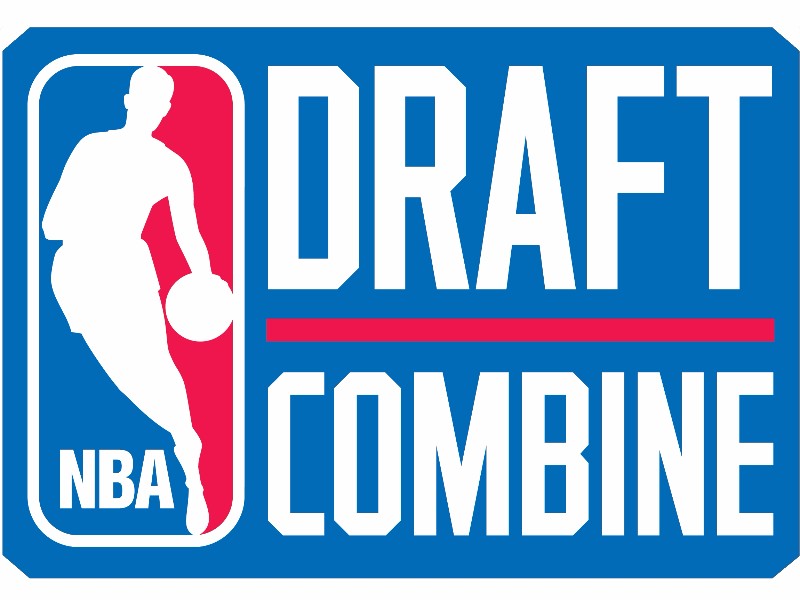







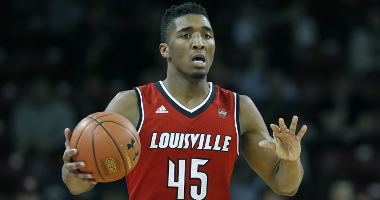




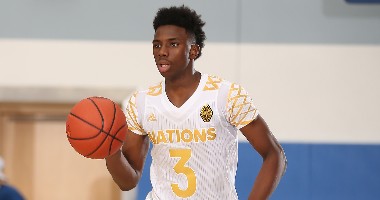



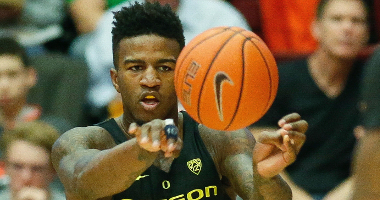

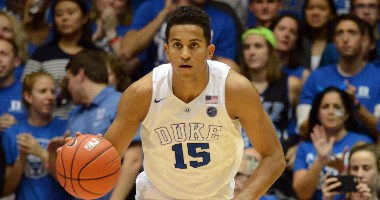



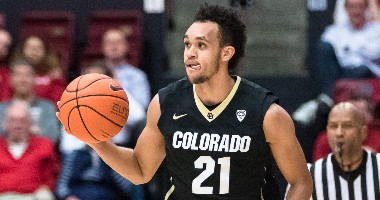


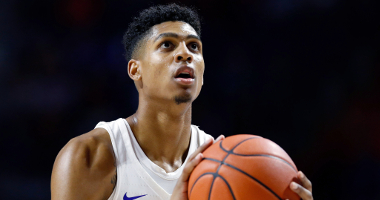





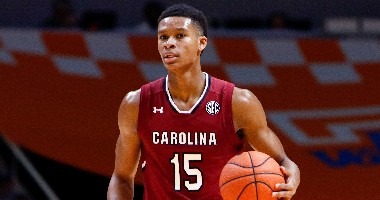

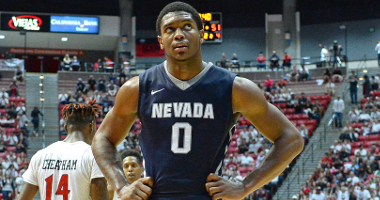

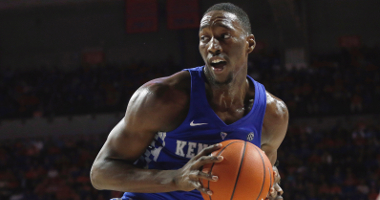





Comments